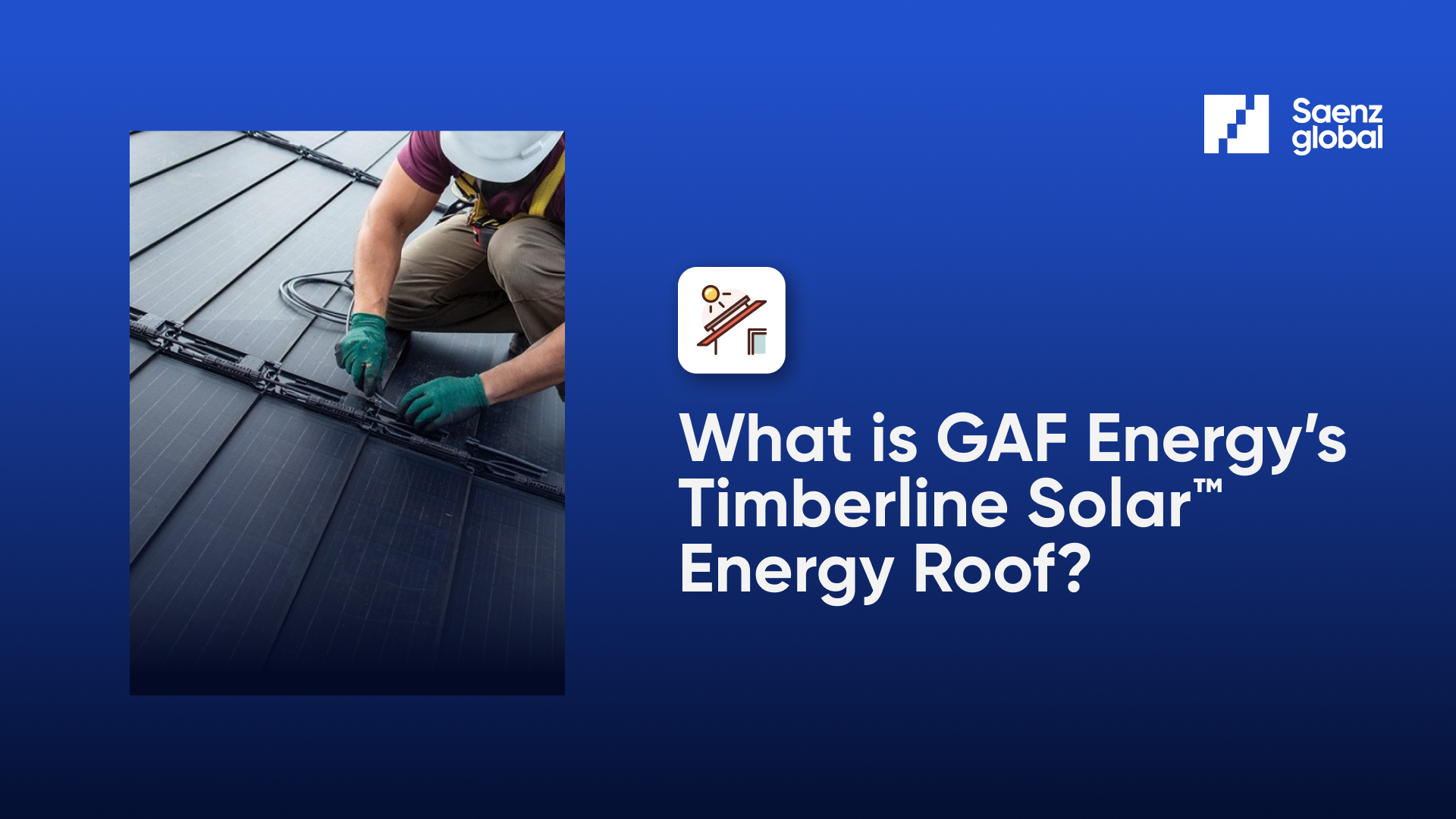Exploring GAF Energy’s Timberline Solar™ Energy Roof

In the realm of sustainable living and renewable energy solutions, innovation continues to drive progress. One such groundbreaking innovation is GAF Energy’s Timberline Solar™ Energy Roof, a revolutionary concept that seamlessly integrates solar power generation with roofing materials.
The Fusion of Form and Function
At its core, this innovative system consists of high-efficiency solar panels discreetly embedded into GAF’s iconic Timberline® roofing shingles.
How Does it Work?
The Timberline Solar™ Energy Roof operates on a simple yet ingenious principle: harnessing the power of the sun to generate electricity while providing reliable protection for your home. Each solar panel is seamlessly integrated into the roofing system, eliminating the need for bulky racks or mounts that can detract from the visual appeal of the roof.
These solar-integrated shingles capture sunlight throughout the day, converting it into electricity through photovoltaic technology. The generated electricity can be used to power your home or stored in batteries for later use, reducing reliance on the grid and lowering utility bills. Additionally, excess energy can be fed back into the grid, further maximizing savings and contributing to a cleaner, more sustainable energy ecosystem.
Advantages of Timberline Solar™ Energy Roof
- Aesthetic Appeal: Unlike traditional solar panels, which are often mounted on top of existing roofs, the Timberline Solar™ Energy Roof seamlessly blends with the architecture of the home, maintaining its curb appeal while generating renewable energy.
- Durability: GAF’s Timberline® shingles are renowned for their durability and weather resistance, providing reliable protection against the elements for decades. With the integration of solar technology, homeowners can enjoy the benefits of both a robust roofing system and sustainable energy generation.
- Energy Efficiency: By harnessing the power of the sun, the Timberline Solar™ Energy Roof helps reduce reliance on fossil fuels, lowering carbon emissions and mitigating the environmental impact of energy consumption.
- Cost Savings: Investing in solar energy can lead to significant long-term cost savings by reducing or eliminating monthly electricity bills. Furthermore, many governments offer incentives and rebates for adopting renewable energy solutions, further enhancing the financial benefits of Timberline Solar™.
The Pros of Solar Roofing Systems:
1. Diversification of Services: Incorporating solar roofing installation into your service offerings allows you to diversify your roofing business and tap into a growing market segment. By providing both traditional roofing services and solar solutions, you can appeal to a broader range of customers and increase revenue streams.
2. Increased Demand: In the United States, residential solar installations increased by 11% in 2020, with over 3.1 GW of capacity added. Offering solar installation services positions your business at the forefront of this trend, attracting clients who prioritize sustainability and long-term cost savings. Differentiating your roofing business by specializing in solar installations gives you a competitive edge in the market. Clients are more likely to choose contractors with expertise in solar technology, knowing that their projects will be handled with skill and precision.
3. Revenue Potential: Solar roofing projects tend to have higher profit margins compared to traditional roofing jobs. While the initial investment in equipment and training may be significant, the long-term financial rewards make it a worthwhile venture for roofing contractors
4. Partnership Opportunities: Collaborating with solar manufacturers, suppliers, and installers allows you to access resources, expertise, and training programs tailored to solar roofing. Building strategic partnerships can streamline the installation process, enhance service quality, and expand your business network.
5. Community Impact: By promoting solar energy adoption, roofing contractors play a crucial role in advancing environmental sustainability within their communities. Contributing to the proliferation of renewable energy sources helps reduce carbon emissions, combat climate change, and create a cleaner, healthier planet for future generations.
6. State and Federal Tax Incentives: One of the key factors driving the adoption of solar panels is the array of tax incentives available to homeowners and business owners. For residential property owners, the federal residential solar energy tax credit offers a compelling incentive. This credit allows homeowners to claim a percentage of the cost of their solar system installation on their federal income taxes. Notably, solar systems installed between 2022 and 2032 are eligible for a generous 30% tax credit, providing substantial savings for those looking to invest in renewable energy.
The Future of Solar Energy
As the world grapples with the challenges of climate change and seeks to transition to a more sustainable energy future, innovations like GAF Energy’s Timberline Solar™ Energy Roof offer a glimpse into what lies ahead. By seamlessly integrating renewable energy generation with everyday infrastructure, we can pave the way for a greener, cleaner, and more resilient world.
Whether you’re a homeowner looking to reduce your carbon footprint or a forward-thinking builder seeking to incorporate sustainable features into your projects, the Timberline Solar™ Energy Roof represents a compelling solution that marries environmental responsibility with practicality and style.
.png)